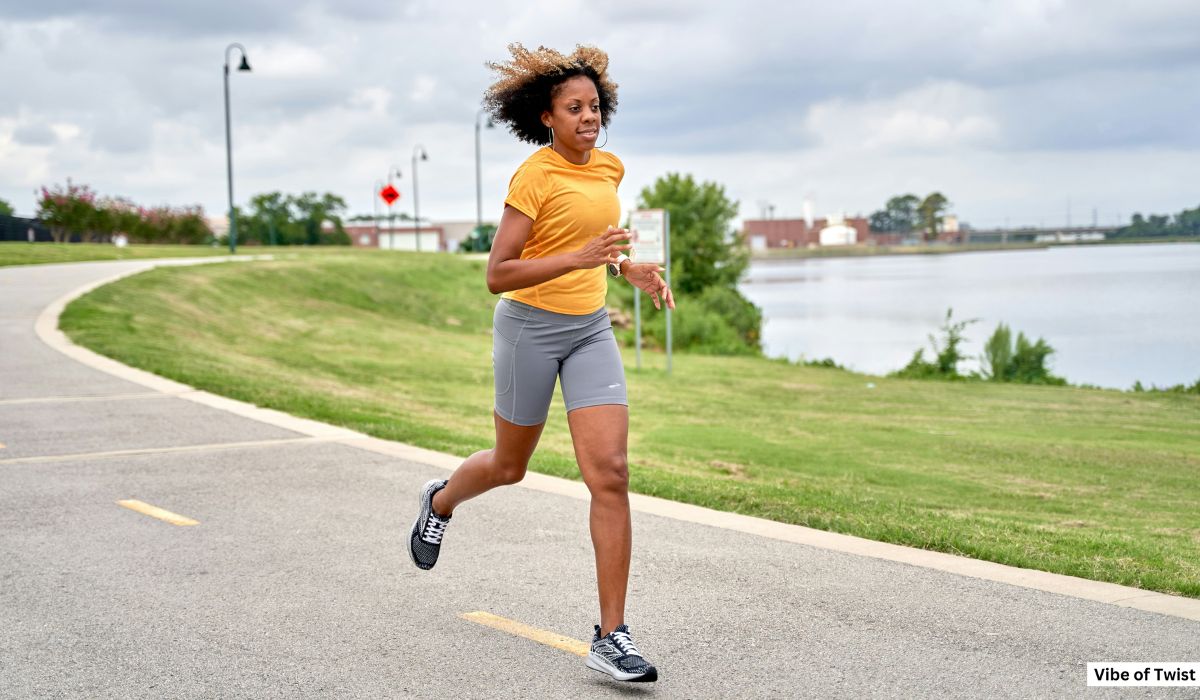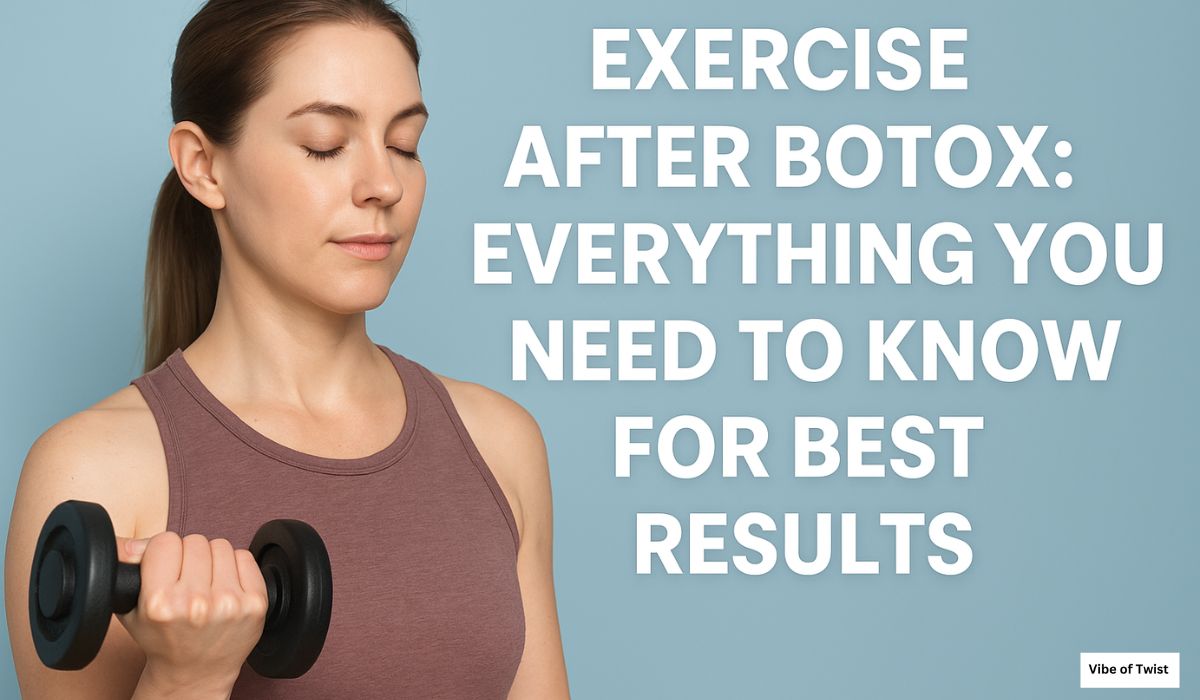Exercise After Botox: Everything You Need to Know for Best Results
Getting Botox is a popular choice for reducing wrinkles and refreshing your appearance. But after the procedure, it’s just as important to follow the right care steps to get the best results. One common question people ask is whether it’s safe to work out after treatment. The answer depends on how soon and what type of movement you’re planning.
Exercise after Botox requires some patience and caution, especially during the first 24 hours. That’s because your body’s blood circulation and heart rate can affect how Botox settles. Rushing into intense activity can increase the Botox migration risk or interfere with the Botox injection site, possibly reducing the effectiveness of the treatment.
Why You Should Be Careful About Exercise After Botox
After getting Botox, your body needs time to heal. The Botox injection site is very sensitive. Botox is a neurotoxin called onabotulinumtoxin A. It works by blocking muscle contractions in certain facial muscles. This helps reduce wrinkles like frown lines, but it must stay in the treatment area to work correctly.
If you start exercising too soon, your heart rate and blood circulation increase. This can push the Botox away from the injected area. This is known as Botox migration risk, and it can lead to Botox treatment side effects like droopy eyelids or uneven results. Exercise can also cause facial pressure through sweat or gear like helmets. That pressure can make the Botox shift, which may reduce its effect.

How Long Should You Wait to Exercise After Botox?
Most experts say to wait at least 24 hours before you return to your workout. This gives the Botox clinician enough time to ensure the product settles into your facial muscles. If you do strenuous workouts post-Botox, like running or lifting weights, too soon, you may ruin your results.
Some clinics suggest you can do gentle exercise after Botox within 4 hours. For example, light walking or daily activities around the house may be okay. But it’s always better to be safe. Your body’s recovery period is important. You should listen to your provider’s Botox care instructions and follow their advice on exercise restrictions Botox requires.
Here is a simple table showing when you can resume different activities:
Activity Type |
Wait Time Post-Botox |
Gentle Walking |
4 hours |
Facial Expressions |
4 hours (if recommended) |
Brisk Walking / Yoga |
24 hours |
Running / Gym Workout |
24-48 hours |
Heavy Lifting / Sports |
48 hours or more |
What Types of Exercises Are Safe — and When?
Not all movement is bad after Botox. Some safe workouts after Botox are even helpful. For instance, your provider may suggest doing facial exercises like smiling or raising your eyebrows. These small movements may help the Botox start working faster.
In the first 24 hours, it’s best to keep your physical activity levels low. Simple walking around your home is fine. You can also do light housework. But don’t do anything that raises your heart rate too much or puts pressure on your face. Sweat can lead to wiping your face, which creates facial pressure. This might push the Botox into the wrong area.
After a full day has passed, you may slowly return to normal. Avoid inverted positions like headstands or yoga poses where your head is below your body. These can increase blood circulation to your face and affect how Botox settles. Wait at least two full days before doing high-intensity exercise like CrossFit or contact sports.
Do’s and Don’ts of Exercising After Botox
It’s easy to get back to your routine if you follow some simple rules. First, do wait at least 24 hours. Do keep your head upright for 4 to 6 hours. That helps keep the Botox in the right place. You can also do facial exercises at that time, like smiling or raising your eyebrows, but only if your provider tells you to.
Now the don’ts. Don’t go running, swimming, or to the gym right away. Avoid lifting weights or doing anything that increases sweating. Don’t wear tight hats, goggles, or helmets, as they can add facial pressure to the Botox injection site. And most important, don’t touch, rub, or press on your face. This can cause Botox migration risk, which may give you unwanted results.
Common Myths and Misconceptions
Some people think that working out right after Botox makes the results last longer. But this is not true. In fact, high-intensity exercise can have the opposite effect. One study in 2023 showed that people who worked out a lot had a shorter Botox results duration than those who didn’t. This may be due to higher IGF-1 levels (insulin-like growth factor) which help nerves regrow. That reduces how long Botox can block muscle contractions.
Another myth is that Botox can migrate days after the injection. This is also not true. The Botox downtime is short. Most problems happen in the first 24 hours. If you follow your postinjection care closely, your Botox should stay in the right spot. One last myth is that all movement is bad. Actually, light facial exercises may be helpful, as long as they’re done under the guidance of a Botox clinician.
Additional Post-Botox Care Tips
Besides exercise, there are other things to avoid. Stay away from hot showers, saunas, and steam rooms, as they raise your blood circulation. Don’t drink alcohol right after your treatment. It can increase bruising. Don’t fly on a plane unless your provider says it’s okay. Flying too soon may increase pressure on your face.
You should also avoid facial treatments, tanning beds, and shaving or waxing the area. All these can irritate the skin and affect how the Botox settles. If you notice any strange symptoms like muscle weakness, trouble speaking, or swelling at the injection site, call your provider right away. In rare cases, emergency care may be needed if symptoms are severe.
Final Thoughts
Exercise after Botox is not forbidden, but it does need to be timed carefully. Your post-Botox recovery matters. If you follow the right steps, you can enjoy smoother skin and better results. Just remember: wait at least 24 hours before doing anything strenuous. Avoid facial pressure, and follow all Botox care instructions from your provider.
Getting Botox is quick, but taking care of your results is just as important. Think of it as a team effort between you and your Botox clinician. With the right plan, you can get back to your fitness routine while keeping your face looking fresh and youthful.
FAQs
How soon can you workout after Botox?
You should wait at least 24 hours before doing any strenuous workouts post-Botox to avoid affecting the results.
What exercises should be avoided after Botox?
Avoid high-intensity exercise, lifting weights, inverted positions, and any movement that puts facial pressure for at least one day.
What happens if I sweat after Botox?
Sweating can cause you to wipe your face, increasing Botox migration risk and disrupting the Botox injection site.
What should you not do after Botox?
Avoid physical activity, lying down, rubbing your face, alcohol, and heat exposure during the postinjection care period
What is the 4-hour rule for Botox?
The 4-hour rule means you shouldn’t lie down, touch your face, or exercise for at least four hours after Botox treatment to prevent movement of the neurotoxin.
